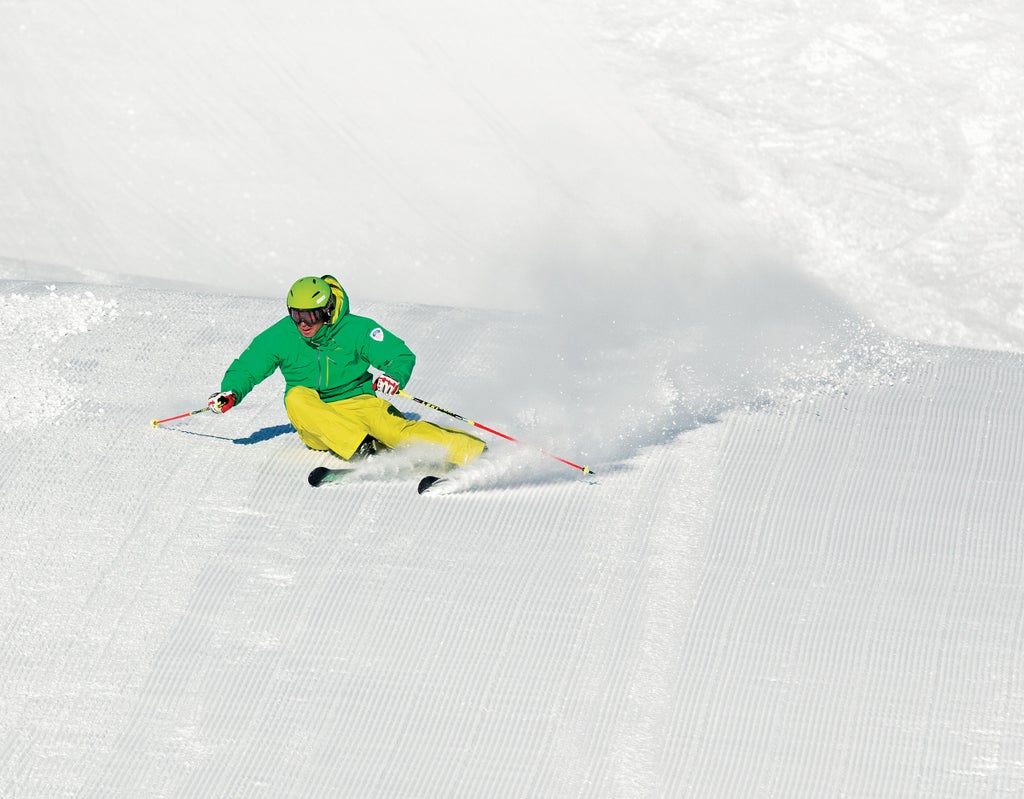Products You May Like
Receive $50 off an eligible $100 purchase at the Outside Shop, where you’ll find gear for all your adventures outdoors.
Sign up for Outside+ today.
Stuck in a skills rut? Check out SKI’s online education courses on Outside Learn, home to hundreds of video tutorials. Get expert tips on how to level up from industry pros like Glen Plake, Wendy Fischer, Daron Rahlves, and more.
Many skiers don’t know how to exploit one of the best features of a ski: the sidecut. A ski’s sidecut is designed to help you turn, be more efficient with your energy, and ultimately, carve. Carving, believe it or not, is one of the most efficient ways of skiing. Those who haven’t mastered the skill are expending more energy skidding through their turns than skiers who have learned to tip their skis on edge. More on that in a second, but let’s back up and talk carving vs. skidding.
A carved turn means that your skis are on edge throughout the turn and the skis’ tip and tail cut through the same point in the snow, leaving a clean arc in your wake. If you’re not tipping your skis on edge before your skis start turning in the other direction, you’re skidding—not carving. Many skiers who ski fast down blues and blacks think they are carving, but in reality, the majority of them are skidding down the hill. In a true carve, your skis will push you through the turn. Skidding happens when you push your skis through the turn.
Watch: Get more pointers on how to level up in SKI’s How to Break Through online course
If you want to carve, your goal needs to be to change edges before your skis change direction. This requires patience and precise intention. Your lower body (ankles, knees, thighs) needs to actively tip your skis on edge and hold them there throughout the turn. At the same time, your upper body must move in the opposite direction. Ready to walk the walk and not just talk the talk when it comes to carving? Here are some pointers to get you on the right track.
Carving
To carve, change edges before changing direction. Roll your ankles and knees while your skis are still pointing across the fall line. You’ll know you’re carving when you leave clean lines in the snow behind you.
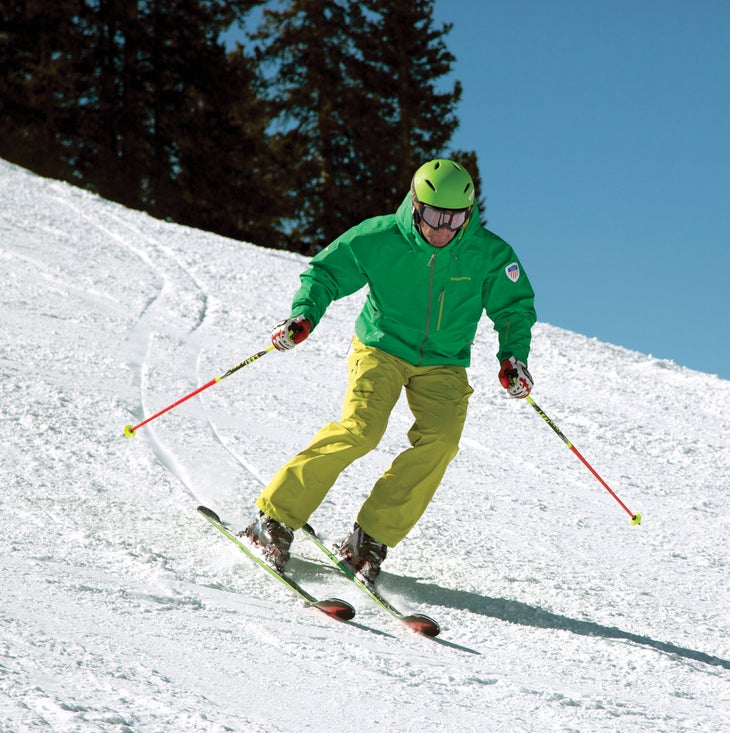
Skidding
Skidded turns happen when skis stay flat on the snow during the turn transition and you push the ski through the turn. The turn has already happened before skis start to tip onto their edges.
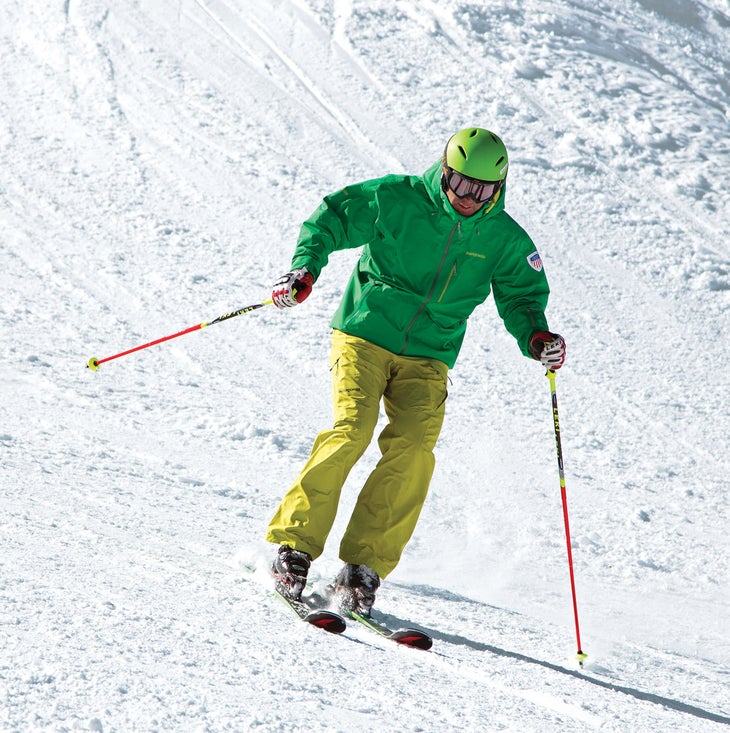
Carving drills to help you get on edge
Drill 1: Knee angulation
Use your hands to help accentuate your skis tipping onto their edges. When turning to the left, use hands to push on the ride side of your knees to the inside of the turn. The goal here is to feel your feet and skis tipping in the same direction as your knees.
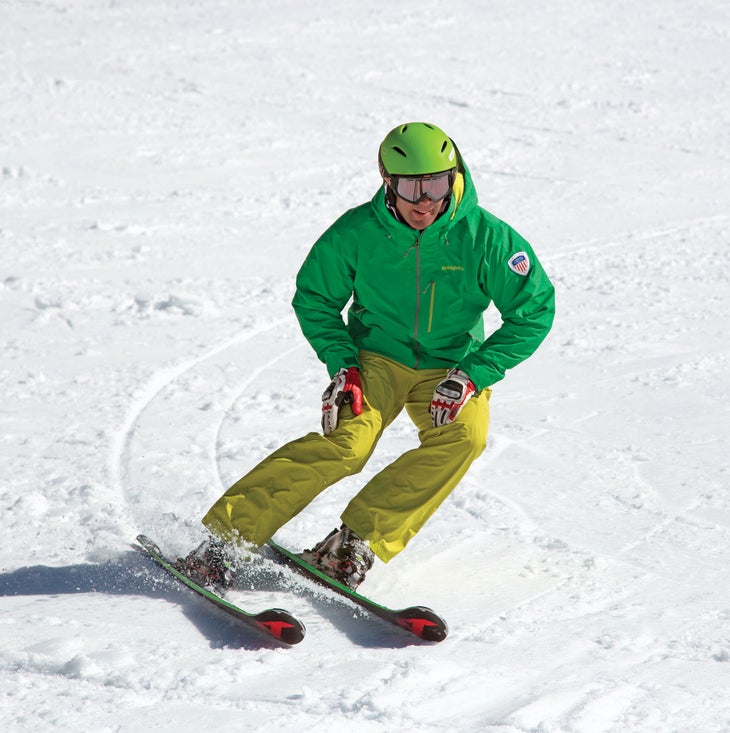
Drill 2: Upper body angulation
Cross your arms with your poles positioned across your shoulders. When carving, the upper body leans opposite of the lower body. Use your poles as a reference of how the upper body is leaning. The goal is to tilt the poles to the outside of your turn.
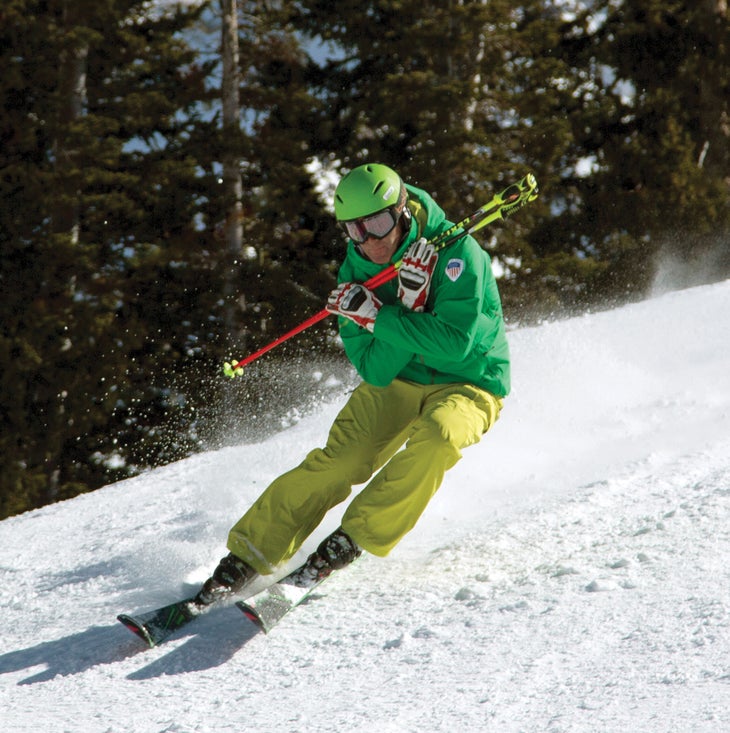
Want to learn how to make your turns more versatile? SKI teamed up with the Professional Ski Instructors of America (PSIA) to design the online course How to Break Through. Dig in and get in-depth instruction on techniques and tactics that will help you level up.
